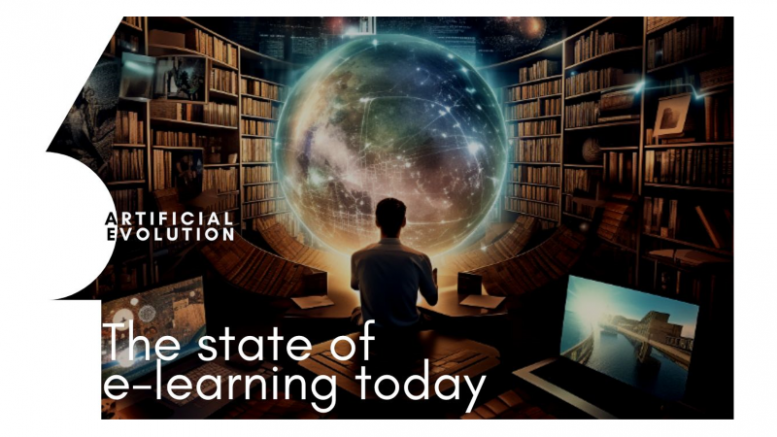Disclaimer: The writer runs a marketing e-learning company. Some opinions maybe biased – actually, most are.
When I started NAVIC in 2020, it was the golden era of e-learning. Schools, colleges, corporates and other educational institutions made Zoom’s stock price a moonshot.
The scenario today, is what experts call “Get back to work and come back to school”.
Does this mean e-learning is dying?
Nah.
E-Learning: The product
When you start a thing – a company, a hobby or anything that you devote more than a couple hours a day to, you understand ground reality. I had a strange realisation around 2021.
“Most e-learning is recorded”
The equation is as follows:
Recorded lectures + self learning schedules – attention span = lower retention.
Why? Because it happened to me and most peers in the business.
I participate in a lot of e-learning programs to not just up skill but to gain perspective on product, marketing and conversion elements that e-learning and ed-tech companies use. Learning from their misgivings allows me to make NAVIC a better, more functional product.
Without naming names, teaching became too much of a cash-grab or valuation game for most unicorns. Its great for the entrepreneur – not so much for the student.
Back in the day…
The origins of e-learning can be traced back to the early 20th century when distance education was first introduced. In 1892, the University of Chicago became the first institution to offer correspondence courses, allowing students to learn remotely through written materials exchanged by mail. This method gained popularity over the years, with universities and organisations adopting similar distance learning models.
However, it was not until the advent of computers and the internet that e-learning truly began to take shape. In the 1960s, researchers started exploring computer-based instruction (CBI) as a means of delivering educational content. With advancements in technology and networking capabilities in subsequent decades, e-learning gradually transformed from simple text-based programs to interactive multimedia platforms. In the late 1990s, Learning Management Systems (LMS) emerged as a crucial component for organising and delivering online courses.
Mobile Learning
With the advent of smartphones and tablets, mobile learning has rapidly gained popularity, revolutionising the field of e-learning. Mobile learning, also known as m-learning, allows learners to access educational content anytime and anywhere through their portable devices. The convenience and flexibility offered by mobile devices have made it easier for individuals to engage in online courses. Furthermore, the rise of online courses has contributed to the evolution of e-learning. Traditional classroom-based education is being supplemented or replaced by virtual classrooms where learners can access course materials, participate in discussions, and submit assignments electronically. Online courses offer a wide range of subjects and are often more affordable than traditional education options.
The Flip-side
Whether it’s the sigma bald man or the 300 other “coaches” that sprung up, the e-learning market became an evolved version of YouTube. “Pay us 500USD for 6 sessions and we’ll motivate you through our recorded lectures”
Ok. :/
Additionally, certificates lost meaning. Today, in 7 hours of fast forwarding and low retention, one can obtain a certificate in Corporate Strategy from the University of London or learn Behavioural Finance from Duke University.
Does this help your LinkedIn profile and future recruiters to take you seriously.
Yes.
Does it help you retain knowledge?
Meh.
Trends and directions
As technology continues to advance at an unprecedented pace, the future of e-learning holds immense potential. Good and bad.
One significant trend is the integration of artificial intelligence (AI) in e-learning platforms. AI algorithms can analyse individual learning patterns, adapt content, and provide personalised recommendations to enhance the learning experience. Something I’m really excited about. This enables learners to receive tailored content that suits their specific needs, leading to more effective and efficient learning outcomes. As a result, students can focus on the specific areas where they need improvement, leading to a more efficient and effective learning process.
Another emerging trend is the use of virtual reality (VR) and augmented reality (AR) in e-learning. By creating immersive and interactive environments, VR and AR technologies enable learners to engage with educational content in a more hands-on manner. Especially in technical and “hands-on” skillsets like medicine and engineering, this approach enhances understanding and retention by allowing learners to experience concepts firsthand.
The industry is broad. More players will walk in and many will walk out.
If you can spark curiosity with some things you’ve said, the student finds their own path. Humans are smart.
My suggestion: Make the product learning and retention. Not pre-decided courses.
Students will thank you.
Stay curious. Stay Secure.
See you next fortnight
Climb.
The views and opinions published here belong to the author and do not necessarily reflect the views and opinions of the publisher.



Be the first to comment on "The state of e-learning today"